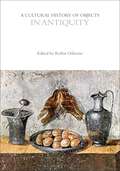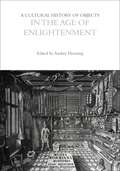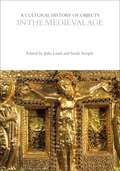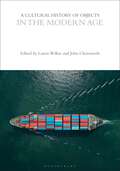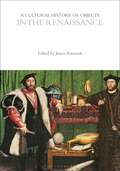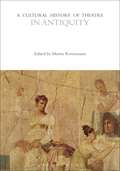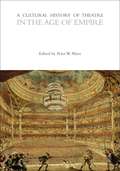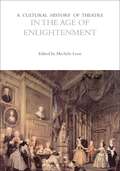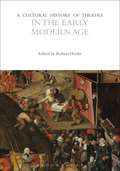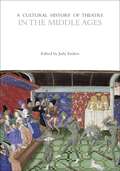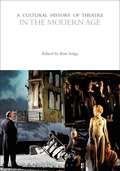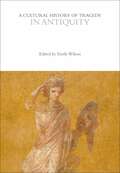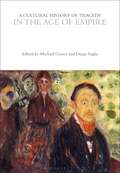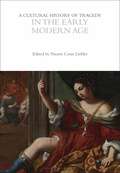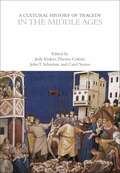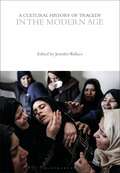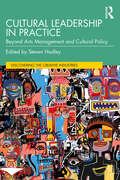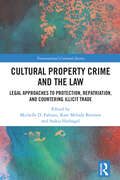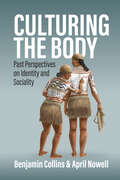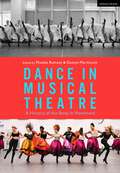- Table View
- List View
A Cultural History of Hair in the Renaissance (The Cultural Histories Series)
In the period 1450 to 1650 in Europe, hair was braided, curled, shaped, cut, colored, covered, decorated, supplemented, removed, and reused in magic, courtship, and art, amongst other things. On the body, Renaissance men and women often considered hair a signifier of order and civility. Hair style and the head coverings worn by many throughout the period marked not only the wearer's engagement with fashion, but also moral, religious, social, and political beliefs. Hair established individuals' positions in the period's social hierarchy and signified class, gender, and racial identities, as well as distinctions of age and marital and professional status. Such a meaningful part of the body, however, could also be disorderly, when it grew where it wasn't supposed to or transgressed the body's boundaries by being wild, uncovered, unpinned, or uncut. A natural material with cultural import, hair weaves together the Renaissance histories of fashion, politics, religion, gender, science, medicine, art, literature, and material culture.A necessarily interdisciplinary study, A Cultural History of Hair in the Renaissance explores the multiple meanings of hair, as well as the ideas and practices it inspired. Separate chapters contemplate Religion and Ritualized Belief, Self and Society, Fashion and Adornment, Production and Practice, Health and Hygiene, Sexuality and Gender, Race and Ethnicity, Class and Social Status, and Cultural Representations.
A Cultural History of Objects in Antiquity (The Cultural Histories Series)
A Cultural History of Objects in Antiquity covers the period 500 BCE to 500 CE, examining ancient objects from machines and buildings to furniture and fashion. Many of our current attitudes to the world of things are shaped by ideas forged in classical antiquity. We now understand that we do not merely do things to objects, they do things to us. Reinterpreting objects in Greece and Rome casts new light on our understanding of ourselves and turns the ancient world upside down. The 6 volume set of the Cultural History of Objects examines how objects have been created, used, interpreted and set loose in the world over the last 2500 years. Over this time, the West has developed particular attitudes to the material world, at the centre of which is the idea of the object. The themes covered in each volume are objecthood; technology; economic objects; everyday objects; art; architecture; bodily objects; object worlds. Robin Osborne is Professor of Ancient History at the University of Cambridge, UK. Volume 1 in the Cultural History of Objects set. General Editors: Dan Hicks and William Whyte
A Cultural History of Objects in the Age of Enlightenment (The Cultural Histories Series)
A Cultural History of Objects in the Age of Enlightenment covers the period 1600 to 1760, a time marked by the movement of people, ideas and goods. The objects explored in this volume –from scientific instrumentation and Baroque paintings to slave ships and shackles –encapsulate the contradictory impulses of the age. The entwined forces of capitalism and colonialism created new patterns of consumption, facilitated by innovations in maritime transport, new forms of exchange relations, and the exploitation of non-Western peoples and lands. The world of objects in the Enlightenment reveal a Western material culture profoundly shaped by global encounters. The 6 volume set of the Cultural History of Objects examines how objects have been created, used, interpreted and set loose in the world over the last 2500 years. Over this time, the West has developed particular attitudes to the material world, at the centre of which is the idea of the object. The themes covered in each volume are objecthood; technology; economic objects; everyday objects; art; architecture; bodily objects; object worlds. Audrey Horning is Professor at William & Mary, USA, and at Queen's University Belfast, UK. Volume 4 in the Cultural History of Objects set. General Editors: Dan Hicks and William Whyte
A Cultural History of Objects in the Medieval Age (The Cultural Histories Series)
A Cultural History of Objects in the Medieval Age covers the period 500 to 1400, examining the creation, use and understanding of human-made objects and their consequences and impacts. The power and agency of objects significantly evolved over this time. Exploring objects and artefacts within art, technology, and everyday life, the volume challenges our understanding of both life worlds and object worlds in medieval society. The 6 volume set of the Cultural History of Objects examines how objects have been created, used, interpreted and set loose in the world over the last 2500 years. Over this time, the West has developed particular attitudes to the material world, at the centre of which is the idea of the object. The themes covered in each volume are objecthood; technology; economic objects; everyday objects; art; architecture; bodily objects; object worlds. Julie Lund is Associate Professor at the University of Oslo, Norway. Sarah Semple is Professor at Durham University, UK. Volume 2 in the Cultural History of Objects set. General Editors: Dan Hicks and William Whyte
A Cultural History of Objects in the Modern Age (The Cultural Histories Series)
A Cultural History of Objects in the Modern Age covers the period 1900 to today, a time marked by massive global changes in production, transportation, and information-sharing in a post-colonial world. New materials and inventions - from plastics to the digital to biotechnology - have created unprecedented scales of disruption, shifting and blurring the categories and meanings of the object. If the 20th century demonstrated that humans can be treated like things whilst things can become ever more human, where will the 21st century take us? The 6 volume set of the Cultural History of Objects examines how objects have been created, used, interpreted and set loose in the world over the last 2500 years. Over this time, the West has developed particular attitudes to the material world, at the centre of which is the idea of the object. The themes covered in each volume are objecthood; technology; economic objects; everyday objects; art; architecture; bodily objects; object worlds. Laurie A. Wilkie is Professor at the University of California-Berkeley, USA. John M. Chenoweth, is Associate Professor at the University of Michigan-Dearborn, USA. Volume 6 in the Cultural History of Objects set. General Editors: Dan Hicks and William Whyte
A Cultural History of Objects in the Renaissance (The Cultural Histories Series)
A Cultural History of Objects in the Renaissance covers the period 1400 to 1600. The Renaissance was a cultural movement, a time of re-awakening when classical knowledge was rediscovered, leading to an efflorescence in philosophy, art, and literature. The period fostered an emerging sense of individualism across European cultures. This sense was expressed through a fascination with materiality and the natural world, and a growing attachment to things. The 6 volume set of the Cultural History of Objects examines how objects have been created, used, interpreted and set loose in the world over the last 2500 years. Over this time, the West has developed particular attitudes to the material world, at the centre of which is the idea of the object. The themes covered in each volume are objecthood; technology; economic objects; everyday objects; art; architecture; bodily objects; object worlds. James Symonds is Professor at the University of Amsterdam, The Netherlands. Volume 3 in the Cultural History of Objects set. General Editors: Dan Hicks and William Whyte
A Cultural History of Theatre in Antiquity (The Cultural Histories Series)
Theatre was at the very heart of culture in Graeco-Roman civilizations and its influence permeated across social and class boundaries. The theatrical genres of tragedy, comedy, satyr play, mime and pantomime operate in Antiquity alongside the conception of theatre as both an entertainment for the masses and a vehicle for intellectual, political and artistic expression. Drawing together contributions from scholars in Classics and Theatre Studies, this volume uniquely examines the Greek and Roman cultural spheres in conjunction with one another rather than in isolation. Each chapter takes a different theme as its focus: institutional frameworks; social functions; sexuality and gender; the environment of theatre; circulation; interpretations; communities of production; repertoire and genres; technologies of performance; and knowledge transmission.
A Cultural History of Theatre in the Age of Empire (The Cultural Histories Series)
The 19th century ushered in an unprecedented boom in technology, the unification of European nations, the building of global empires and stabilization of the middle classes. The theatre of the era reflected these significant developments as well as helped to catalyse them. Populist theatre and purposebuilt playhouses flourished in the ever-growing urban and cosmopolitan centres of Europe and in expanding global networks. This volume provides a comprehensive and interdisciplinary overview of the cultural history of theatre from 1800 to 1920. Highly illustrated with 51 images, the ten chapters each take a different theme as their focus: institutional frameworks; social functions; sexuality and gender; the environment of theatre; circulation; interpretations; communities of production; repertoire and genres; technologies of performance; and knowledge transmission.
A Cultural History of Theatre in the Age of Enlightenment (The Cultural Histories Series)
French philosopher Jean-Jacques Rousseau wrote, 'the general effect of the theatre is to strengthen the national character to augment the national inclinations, and to give a new energy to all the passions'. During the Enlightenment, the advancement of radical ideas along with the emergence of the bourgeois class contributed to a renewed interest in theatre's efficacy, informed by philosophy yet on behalf of politics. While the 18th century saw a growing desire to define the unique and specific features of a nation's drama, and audiences demanded more realistic portrayals of humanity, theatre is also implicated in this age of revolutions. A Cultural History of Theatre in the Age of Enlightenment examines these intersections, informed by the writings of key 18th-century philosophers. Richly illustrated with 45 images, the ten chapters each take a different theme as their focus: institutional frameworks; social functions; sexuality and gender; the environment of theatre; circulation; interpretations; communities of production; repertoire and genres; technologies of performance; and knowledge transmission.
A Cultural History of Theatre in the Early Modern Age (The Cultural Histories Series)
For both producers and consumers of theatre in the early modern era, art was viewed as a social rather than an individual activity. Emerging in the context of new capitalistic modes of production, the birth of the nation state and the rise of absolute monarchies, theatre also proved a highly mobile medium across geolinguistic boundaries. This volume provides a comprehensive and interdisciplinary overview of the cultural history of theatre from 1400 to 1650, and examines the socioeconomically heterodox nature of theatre and performance during this period. Highly illustrated with 48 images, the ten chapters each take a different theme as their focus: institutional frameworks; social functions; sexuality and gender; the environment of theatre; circulation; interpretations; communities of production; repertoire and genres; technologies of performance; and knowledge transmission.
A Cultural History of Theatre in the Middle Ages (The Cultural Histories Series)
Historically and broadly defined as the period between the fall of the Roman Empire and the rise of the Renaissance, the Middle Ages encompass a millennium of cultural conflicts and developments. A large body of mystery, passion, miracle and morality plays cohabited with song, dance, farces and other public spectacles, frequently sharing ecclesiastical and secular inspiration. A Cultural History of Theatre in the Middle Ages provides a comprehensive and interdisciplinary overview of the cultural history of theatre between 500 and 1500, and imaginatively pieces together the puzzle of medieval theatre by foregrounding the study of performance. Each of the ten chapters of this richly illustrated volume takes a different theme as its focus: institutional frameworks; social functions; sexuality and gender; the environment of theatre; circulation; interpretations; communities of production; repertoire and genres; technologies of performance; and knowledge transmission.
A Cultural History of Theatre in the Modern Age (The Cultural Histories Series)
To call something modern is to assert something fundamental about the social, cultural, economic and technical sophistication of that thing, over and against what has come before. A Cultural History of Theatre in the Modern Age provides an interdisciplinary overview of theatre and performance in their social and material contexts from the late 19th century through the early 2000s, emphasizing key developments and trends that both exemplify and trouble the various meanings of the term 'modern', and the identity of modernist theatre and performance. Highly illustrated with 40 images, the ten chapters each take a different theme as their focus: institutional frameworks; social functions; sexuality and gender; the environment of theatre; circulation; interpretations; communities of production; repertoire and genres; technologies of performance; and knowledge transmission.
A Cultural History of Tragedy in Antiquity (The Cultural Histories Series)
In this volume, tragedy in antiquity is examined synoptically, from its misty origins in archaic Greece, through its central position in the civic life of ancient Athens and its performances across the Greek-speaking world, to its new and very different instantiations in Republican and Imperial Roman contexts. Lively, original essays by eminent scholars trace the shifting dramatic forms, performance environments, and social meanings of tragedy as it was repeatedly reinvented. Tragedy was consistently seen as the most serious of all dramatic genres; these essays trace a sequence of different visions of what the most serious kind of dramatic story might be, and the most appropriate ways of telling those stories on stage.Each chapter takes a different theme as its focus: forms and media; sites of performance and circulation; communities of production and consumption; philosophy and social theory; religion, ritual, and myth; politics of city and nation; society and family, and gender and sexuality.
A Cultural History of Tragedy in the Age of Empire (The Cultural Histories Series)
This volume traces a path across the metamorphoses of tragedy and the tragic in Western cultures during the bourgeois age of nations, revolutions, and empires, roughly delimited by the French Revolution and the First World War. Its starting point is the recognition that tragedy did not die with Romanticism, as George Steiner famously argued over half a century ago, but rather mutated and dispersed, converging into a variety of unstable, productive forms both on the stage and off. In turn, the tragic as a concept and mode transformed itself under the pressure of multiple social, historical and political-ideological phenomena. This volume therefore deploys a narrative centred on hybridization extending across media, genres, demographics, faiths both religious and secular, and national boundaries. The essays also tell a story of how tragedy and the tragic offered multiple means of capturing the increasingly fragmented perception of reality and history that emerged in the 19th century.Each chapter takes a different theme as its focus: forms and media; sites of performance and circulation; communities of production and consumption; philosophy and social theory; religion, ritual and myth; politics of city and nation; society and family, and gender and sexuality.
A Cultural History of Tragedy in the Early Modern Age (The Cultural Histories Series)
In this volume, 8 lively, original essays by eminent scholars trace the kaleidoscopically shifting dramatic forms, performance contexts, and social implications of tragedy throughout the period and across geographic, political, and social references. They attend not only to the familiar cultural lenses of English and mainstream Continental dramas but also to less familiar European exempla from Croatia and Hungary.Each chapter takes a different theme as its focus: forms and media; sites of performance and circulation; communities of production and consumption; philosophy and social theory; religion, ritual and myth; politics of city and nation; society and family, and gender and sexuality.
A Cultural History of Tragedy in the Middle Ages (The Cultural Histories Series)
For the first time, a group of distinguished authors come together to provide an authoritative exploration of the cultural history of tragedy in the Middle Ages. Reports of the so-called death of medieval tragedy, they argue, have been greatly exaggerated; and, for the Middle Ages, the stakes couldn't be higher. Eight essays offer a blueprint for future study as they take up the extensive but much-neglected medieval engagement with tragic genres, modes, and performances from the vantage points of gender, politics, theology, history, social theory, anthropology, philosophy, economics, and media studies. The result? A recuperated medieval tragedy that is as much a branch of literature as it is of theology, politics, law, or ethics and which, at long last, rejoins the millennium-long conversation about one of the world's most enduring art forms.Each chapter takes a different theme as its focus: forms and media; sites of performance and circulation; communities of production and consumption; philosophy and social theory; religion, ritual and myth; politics of city and nation; society and family, and gender and sexuality.
A Cultural History of Tragedy in the Modern Age (The Cultural Histories Series)
In this book leading scholars come together to provide a comprehensive, wide-ranging overview of tragedy in theatre and other media from 1920 to the present. The 20th century is often considered to have witnessed the death of tragedy as a theatrical genre, but it was marked by many tragic events and historical catastrophes, from two world wars and genocide to the proliferation of nuclear weapons and the anticipation and onset of climate change. The authors in this volume wrestle with this paradox and consider the degree to which the definitions, forms and media of tragedy were transformed in the modern period and how far the tragic tradition-updated in performance-still spoke to 20th- and 21st-century challenges. While theater remains the primary focus of investigation in this strikingly illustrated book, the essays also cover tragic representation-often re-mediated, fragmented and provocatively questioned-in film, art and installation, photography, fiction and creative non-fiction, documentary reporting, political theory and activism. Since 24/7 news cycles travel fast and modern crises cross borders and are reported across the globe more swiftly than in previous centuries, this volume includes intercultural encounters, various forms of hybridity, and postcolonial tragic representations.Each chapter takes a different theme as its focus: forms and media; sites of performance and circulation; communities of production and consumption; philosophy and social theory; religion, ritual and myth; politics of city and nation; society and family, and gender and sexuality.
Cultural Leadership in Practice: Beyond Arts Management and Cultural Policy (Discovering the Creative Industries)
What do cultural leaders really think about the problems they, and the arts and cultural sector, face? This book brings global leaders in the cultural field into dialogue with academics and experts to offer profound insight and perspectives on the complex issues the cultural sector faces in a rapidly accelerating and destabilising twenty-first century context.The book engages directly with leaders in the arts and cultural sector, bridging the gap between academia, policy and practice. Each chapter sheds new light on national cultural policy contexts, offering different perspectives on arts subsidy, audiences, the cultural workforce, heritage, artform development and how cultural leadership functions in a fast-changing local, national and international context. Interviews are conducted by academics and experts with significant knowledge and understanding of the arts management and cultural policy field, who ask critical and probing questions. Featuring interviews with an impressively international range of senior figures from the cultural sector, from the Royal Opera House, BMW, Bloomberg and Onassis Foundation and covering countries including the UK, Germany, Chile, Singapore, Greece, USA, Serbia and Ireland, the book gives a truly global overview of cultural leadership from leaders who are open to question, critique and challenge. Each chapter offers a unique and fascinating insight into the mind of a leader in their field, with their experience ranging from huge participatory events featuring tens of thousands of people to the visual arts, opera, the Turner Prize and the #blacklivesmatter movement.This book will be essential reading for reflective cultural leaders around the world, as well as a useful resource for students and scholars involved with arts and cultural management and policy.
Cultural Property Crime and the Law: Legal Approaches to Protection, Repatriation, and Countering Illicit Trade (Transnational Criminal Justice)
This book explores innovative approaches to using and operating within and around both criminal law and civil law in the detection, investigation, and restitution of illicit cultural property.The volume brings together a wide range of authors who research and work in combatting cultural property crime. It explores the normative tensions and intersections between civil and criminal law and where they complement each other in the field. It focuses on innovative legal solutions to the unique challenges presented when facing a transnational form of crime that must consider varying structures of law and order, as well as a deep understanding of the heritage in question, both in past and the present cultures. The collection examines what both areas of law contribute to preventing cultural property crime from occurring, holding offenders responsible before the law, and returning objects to their rightful owners and/or places of origin. Combining the perspectives of academics and practitioners, the volume highlights voices from around the globe, using this range of experience to explore new ideas and applications of legal theory and practice to cases involving cultural property crimes.The book will be of interest to academics and practitioners in cultural property crime in the fields of criminology, law, archaeology, museum studies, political science, economics, and law enforcement.
Culturing the Body: Past Perspectives on Identity and Sociality
The human body is both the site of lived experiences and a means of communicating those experiences to a diverse audience. Hominins have been culturing their bodies, that is adding social and cultural meaning through the use pigments and objects, for over 100,000 years. There is archaeological evidence for practices of adornment of the body by late Pleistocene and early Holocene hominins, including personal ornaments, clothing, hairstyles, body painting, and tattoos. These practices have been variously interpreted to reflect differences such as gender, status, and ethnicity, to attract or intimidate others, and as indices of a symbolically mediated self and personal identity. These studies contribute to a novel and growing body of evidence for diversity of cultural expression in the past, something that is a hallmark of human cultures today.
Curating Fascism: Exhibitions and Memory from the Fall of Mussolini to Today (Visual Cultures and Italian Contexts)
On the centenary of the fascist party's ascent to power in Italy, Curating Fascism examines the ways in which exhibitions organized from the fall of Benito Mussolini's regime to the present day have shaped collective memory, historical narratives, and political discourse around the Italian ventennio. It charts how shows on fascism have evolved since the postwar period in Italy, explores representations of Italian fascism in exhibitions across the world, and highlights blindspots in art and cultural history, as well as in exhibition practices. Featuring contributions from an international group of art, architectural, design, and cultural historians, as well as journalists and curators, this book treats fascism as both a historical moment and as a major paradigm through which critics, curators, and the public at large have defined the present moment since World War II. It interweaves historical perspectives, critical theory, and direct accounts of exhibitions from the people who conceived them or responded to them most significantly in order to examine the main curatorial strategies, cultural relevance, and political responsibility of art exhibitions focusing on the Fascist period. Through close analysis, the chapter authors unpack the multifaceted specificity of art shows, including architecture and exhibition design; curatorial choices and institutional history; cultural diplomacy and political history; theories of viewership; and constructed collective memory, to evaluate current curatorial practice.In offering fresh new perspectives on the historiography, collective memory, and understanding of fascist art and culture from a contemporary standpoint, Curating Fascism sheds light on the complex exhibition history of Italian fascism not just within Italy but in such countries as the USA, the UK, Germany, and Brazil. It also presents an innovative approach to the growing field of exhibition theory by bringing contributions from curators and exhibition historians, who critically reflect upon curatorial strategies with respect to the delicate subject of fascism and fascist art, into dialogue with scholars of Italian studies and art historians. In doing so, the book addresses the physical and cultural legacy of fascism in the context of the current historical moment.
Curating Transcultural Spaces: Perspectives on Postcolonial Conflicts in Museum Culture (Visual Cultures and German Contexts)
Curating Transcultural Spaces asks what a museum which enables the presentation of multiple perspectives might look like. Can identity be global and local at the same time? How may one curate dual identity? More broadly, what is the link between the arts and processes of identity construction? This volume, an indispensable source for the process of engaging with colonial history in Germany and beyond, takes its starting point from the 'scandal' of the Humboldt Forum. The transfer of German state collections from the Ethnological Museum and the Museum for Asian Art, located at the margins of Berlin in Dahlem, into the centre of Germany's capital indicates the nation's aspiration of purported multiculturalism and cosmopolitanism; yet the project's resurrection of the site's former Prussian city palace, which was demolished during the GDR, stands in opposition to its very mission, given that the Prussian rulers benefited from colonial exploitation. By examining the contrasting successes of other projects, such as the National Museum of African American History and Culture in Washington DC, Curating Transcultural Spaces compellingly argues for the necessity of taking post-colonial thinking on board in the construction of museum spaces in order to generate genuine exchange between multiple perspectives.
Dada and Its Later Manifestations in the Geographic Margins: Israel, Romania, Poland, and North America (Routledge Research in Art History)
This volume focuses on the unstudied geographic margins of Dada, delving into the roots of Dada in Israel, Romania, Poland, and North America.Contributors consider some of the practices and experiments that were conceived a century ago, surfaced in art throughout the twentieth century, and are still relevant today. Unearthing its Israeli origins, examining Dadaist expressions in Poland, and shedding light on overlooked facets of Dadaist art in Romania and North America, the authors cast a spotlight on the less-explored geographical peripheries of Dada. The book is organized around four thematic trajectories—space, language, materiality, and reception—which are dissected through the lens of micro-histories. Recognizing the continuing validity of questions raised by Dadaist artists, this volume argues that Dada persists as an ongoing endeavor—a continual reexamination of the fundamental tenets of art and its ever-evolving potential manifestations.The book will be of interest to scholars working in art history, modernism, and history of the twentieth and twenty-first centuries.
Dada Data: Contemporary Art Practice in the Era of Post-Truth Politics
What is the relevance of Dada and its artistic strategies in our current moment, one marked by post-truth politics, information floods and big data? How can contemporary art highlight the neglected nuances of cultural representation in the present day? While it may feel like we are living in a period of anomaly with the rise of the alt-right, this book shows how the Dada movement's artistic response to the aggressive nationalism and fascism of its time offers a fruitful analogy to our contemporary era.Dada's counter-cultural strategies, such as the distortion of reality and attacks on elites and rationality, have long been endorsed by artistic avantgardes and subcultures. Dada Data details how modern-day movements have appropriated such tactics in their ways of addressing the public both on- and offline. Bringing together contributions from interdisciplinary scholars, curators and artists working in global contexts that explore an array of artistic modes of persuasion and resistance, the book demonstrates how contemporary art can bring out neglected nuances of our post-truth moment. In linking the Dada movement's counter-cultural activities to modern phenomena such as post-internet art, information floods and big data mining, the book collates original propaganda with diverse artwork from such figures as Hannah Höch, Paula Rego, Tschabalala Self, Sheida Soleimani and South African artists donna Kukama and Kemang Wa Lehulere. In doing so, Dada Data brings together a rich scrapbook of Dada resources and perspectives that are highly relevant to present-day political concerns.With artistic contributions by IOCOSE, donna Kukama, Kemang Wa Lehulere and Montage Mädels.
Dance in Musical Theatre: A History of the Body in Movement
From Oklahoma! and West Side Story, to Spring Awakening and Hamilton, dance remains one of the most important and key factors in musical theatre. Through the integration of song and dance in the 'dream ballets' of choreographers like Agnes De Mille; the triple threat performances of Jerome Robbins' dancers; the signature style creation by choreographers like Bob Fosse with dancers like Gwen Verdon; and the contemporary, identity-driven work of choreographers like Camille A. Brown, the history of the body in movement is one that begs study and appreciation. Dance in Musical Theatre offers guidelines in how to read this movement by analyzing it in terms of composition and movement vocabulary whilst simultaneously situating it both historically and critically. This collection provides the tools, terms, history, and movement theory for reading, interpreting, and centralizing a discussion of dance in musical theatre, importantly, with added emphasis on women and artists of color. Bringing together musical theatre and dance scholars, choreographers and practitioners, this edited collection highlights musical theatre case studies that employ dance in a dramaturgically essential manner, tracking the emergence of the dancer as a key figure in the genre, and connecting the contributions to past and present choreographers. This collection foregrounds the work of the ensemble, incorporating firsthand and autoethnographic accounts that intersect with historical and cultural contexts. Through a selection of essays, this volume conceptualizes the function of dance in musical: how it functions diegetically as a part of the story or non-diegetically as an amplification of emotion, as well as how the dancing body works to reveal character psychology by expressing an unspoken aspect of the libretto, embodying emotions or ideas through metaphor or abstraction.Dance in Musical Theatre makes dance language accessible for instructors, students, and musical theatre enthusiasts, providing the tools to critically engage with the work of important choreographers and dancers from the beginning of the 20th century to today.

